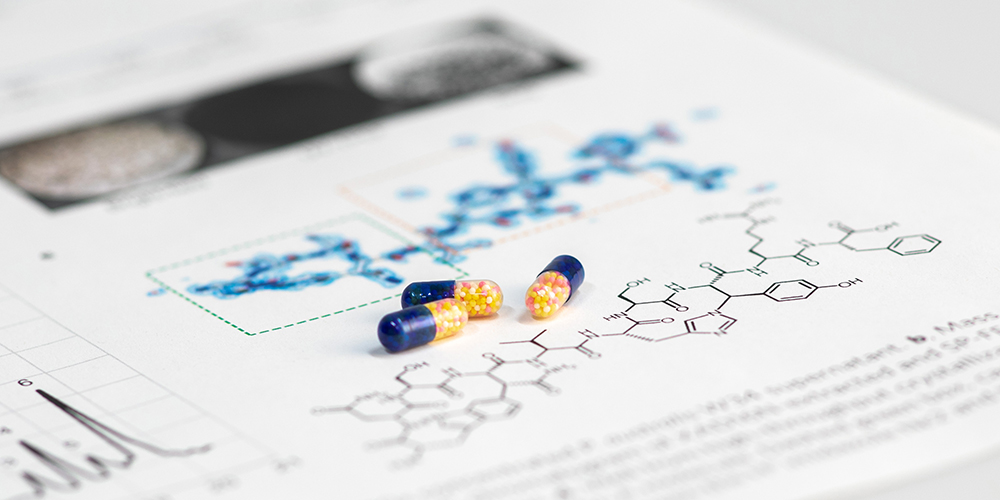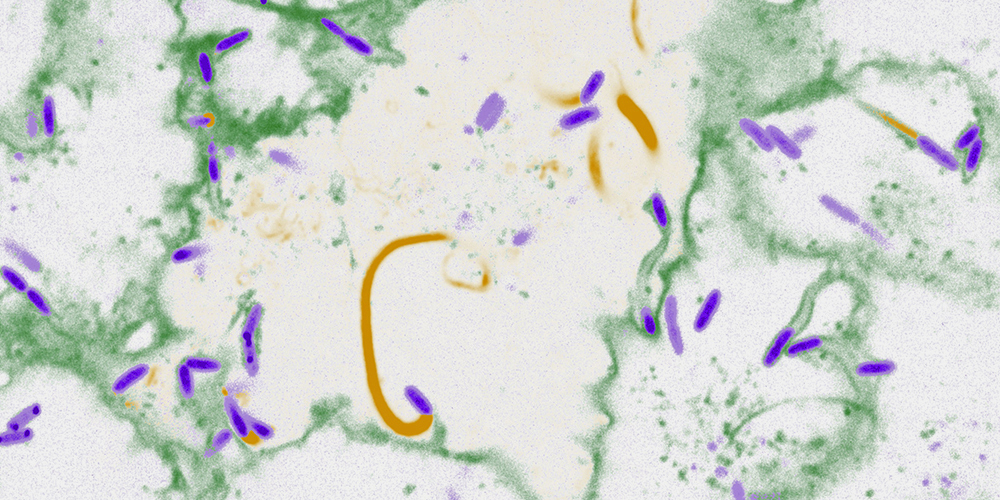Free Content
Discovery of a new antibiotic against resistant pathogens
For a long time, antibiotics were considered a silver bullet against bacterial infections. Over time, many pathogens have adapted to resist antibiotics, so the search for new drugs is becoming increasingly important. An international team of researchers including scientists at the University of Basel, has now discovered a new antibiotic by computational analysis and deciphered its mode of action. Their study is an important step in the development of new effective drugs.
11 October 2022 | Katrin Bühler
The WHO calls the creeping and rapidly growing number of antibiotic-resistant bacteria a “silent pandemic”. The crisis is aggravated by the fact that hardly any new drugs have come onto the market in recent decades. Even today, not all infections can be treated successfully and patients are at risk from routine interventions.
In order to stop the advance of antibiotic-resistant bacteria, new active substances are urgently needed. Such an important discovery has now been made by the team led by researchers from the Northeastern University in Boston together with Prof. Sebastian Hiller from the Biozentrum of the University of Basel. This study was part of the National Centre of Competence in Research (NCCR) "AntiResist" and has now been published in “Nature Microbiology”.
Tough opponents
The researchers discovered the new antibiotic Dynobactin by a computational screening approach. This compound kills Gram-negative bacteria, which include many dangerous and resistant pathogens. “The search for antibiotics against this group of bacteria is far from trivial," says Hiller. “They are well protected by their double membrane and therefore offer little opportunity for attack. And in the millions of years of their evolution, the bacteria have found numerous ways to render antibiotics harmless.”
Only last year, Hiller's team deciphered the mode of action of the recently discovered peptide antibiotic Darobactin. The knowledge gained was integrated into the screening process for new compounds. The researchers made use of the fact that many bacteria produce antibiotic peptides to fight each other. And that these peptides, in contrast to natural substances, are encoded in the bacterial genome.
Fatal effect
“The genes for such peptide antibiotics share a characteristic feature," explains co-first author Dr. Seyed M. Modaresi. “According to this feature, the computer systematically screened the entire genome of those bacteria that produce such peptides. That’s how we identified Dynobactin.” In their study, the authors have demonstrated that this new compound is extremely effective. Mice with life-threatening sepsis caused by resistant bacteria survived the severe infection by the administration of Dynobactin.
By combining different methods, the researchers have been able to resolve the structure as well as the mechanism of action of Dynobactin. This peptide blocks the bacterial membrane protein BamA, which plays an important role in the formation and maintenance of the outer-protective bacterial envelope. “Dynobactin sticks in BamA from the outside like a plug and prevents it from doing its job. So, the bacteria die," says Modaresi. “Although Dynobactin has hardly any chemical similarities with the already known Darobactin, nevertheless it has the same target on the bacterial surface. This, we didn't expect at the beginning.”
A boost for antibiotics research
On the molecular level, however, the scientists have discovered that Dynobactin interacts differently with BamA than Darobactin. By combining certain chemical features of the two, potential drugs could be further improved and optimized. This is an important step on the way to an effective drug. “The computer-based screening will give a new boost to the identification of urgently needed antibiotics,” says Hiller. “In the future, we want to broaden our search and investigate more peptides in terms of their suitability as antimicrobial drugs.”
Original publication
Ryan D. Miller et al.
Computational identification of a systemic antibiotic for Gram-negative bacteria.
Nature Microbiology (2022), doi: 10.1038/s41564-022-01227-4


